Mountain pine "Pug": description and use in landscape design
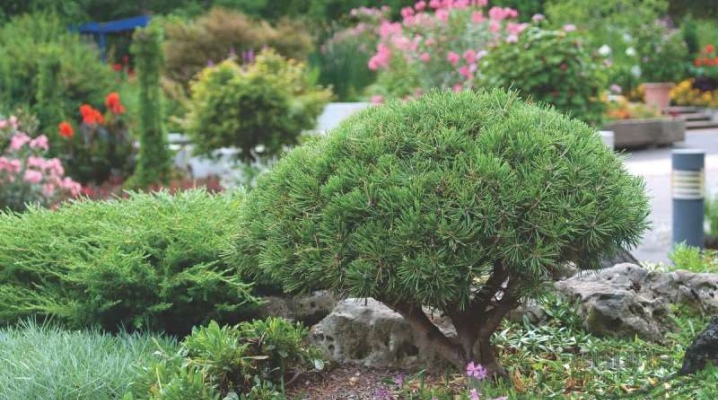
In landscape design, both professionals and novice gardeners often use conifers and shrubs. The Pug Pine is no exception. It is easy to take care of her, she can survive in almost any corner of our country. Therefore, such a plant can be planted in your personal plot.
Peculiarities
Mountain pine "Pug" is also known as "Mini-pug". The plant has a long life span. Some of these pines grow on the ground for up to 500 years. The description of the plant is very simple. It is a small and dense shrub that has a spherical shape.
The height of an already mature plant can be up to two meters.
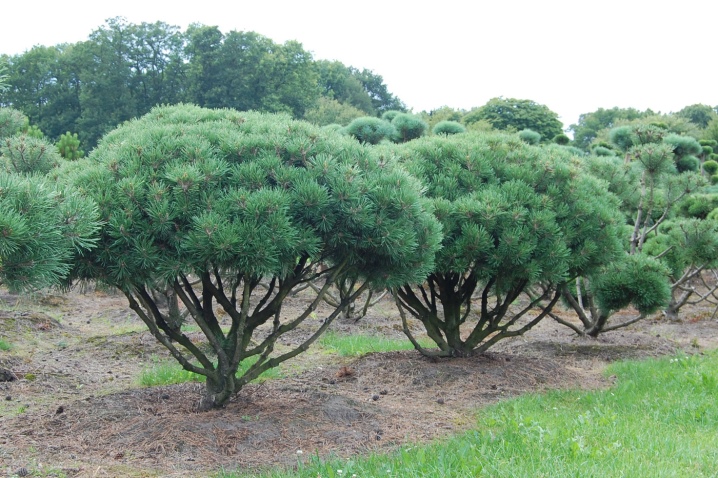
The branches of such a pine tree are covered with tough and shiny needles, which gather in small bunches. The needles can last up to 5 years on the branches, after which they completely crumble. In their place, new needles of a dark green color grow. The buds are egg-shaped and grow up to 5-6 centimeters in diameter. Their color varies from light brown to dark brown depending on the season.


On average, the mountain pine "Pug" can add up to 10 centimeters in height per year and be up to 15 centimeters in volume. At first, the crown has a spherical shape, and after a while it becomes cushion-shaped. Due to its slow growth, it has become popular with many gardeners. After all, such a plant retains its attractive appearance for a long time, and does not require special care. Therefore, it is used quite actively in landscape design. Planting single pines on the territory and group plantings is equally popular.
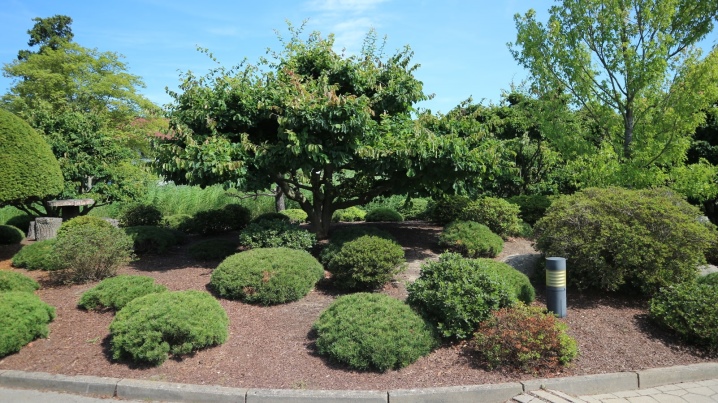
Selection of seedlings and their planting
It is best to buy seedlings in specialized nurseries. After all, there they are sold already fully adapted to life. Saplings that have been grown for 5 years are best suited for this. Of course, their price will be slightly higher than in spontaneous markets, but they also have much more chances of survival.
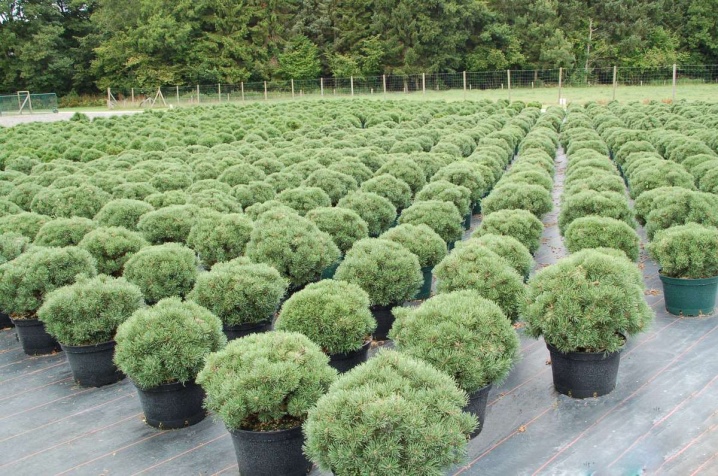
Saplings can have an open root system and a closed one. The former are placed in the open ground, and the latter are planted in separate containers.
You can place such plants in almost any area, however, it is better to bypass too dark ones. For a plant to grow and develop, it needs a lot of sun. Therefore, it will be correct to plant the mountain pine "Pug" in the place where it will have enough light and heat.
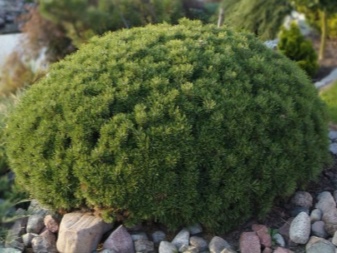

Since the root system of the Pug pine is well developed, it can be planted even in sandy soils. In this case, the acidity of the soil can be any. The planting soil can be composed of coarse sand or fine gravel. In addition, you can add some fallen coniferous needles to it.
First you need to dig a hole. Its width should be 15-16 centimeters larger than the size of the root system, and the height of the pit should be about 70 centimeters. They dig it out in advance, 14-21 days before the disembarkation. The distance between the seedlings should be at least two meters. As a fertilizer, you can add a little nitroammophoska to the pit, up to 100 grams per hole.
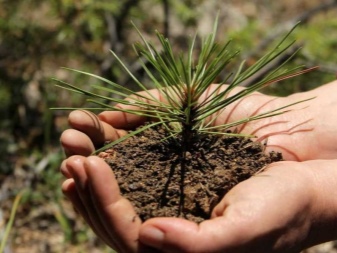

After that, the seedling must be installed in the middle of the hole and covered with earth. Its root collar should be at ground level. After that, the plant must be thoroughly watered, and the ground around it must be covered with spruce branches.

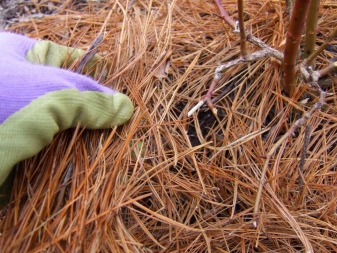
Care
An adult plant does not require special care, but a young seedling needs to be given a little attention.
Watering
First of all, you need to ensure that the plant receives the required amount of moisture. It is best to water around the perimeter of the entire pit, trying to do it very carefully so that water does not get into the near-trunk circle. In too hot time, you can water the crown of the tree by spraying water on it.
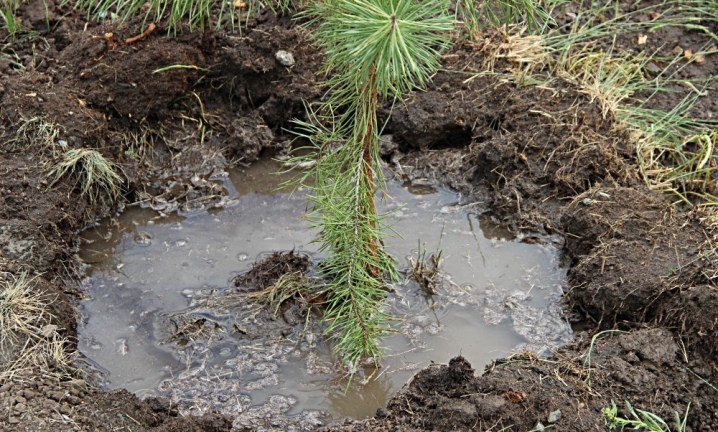
Fertilizer
You need to feed the plant in the first 2 years after planting. Further, the mountain dwarf pine will be able to feed on its own, extracting all the necessary useful components from the soil in which it grows.
There are special complex fertilizers developed for conifers.
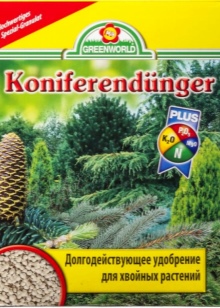
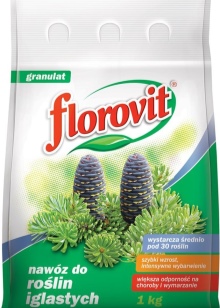
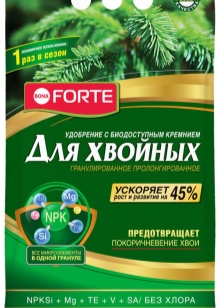
Mulching
For the first time, this is done immediately after planting the seedling in the ground. Peat or ephedra can be used as mulch. The layer should be at least 5 centimeters. After that, the mulch can not even be removed, but simply mixed with the soil. In addition, after each watering, it is necessary, as far as possible, to loosen the soil around the tree.
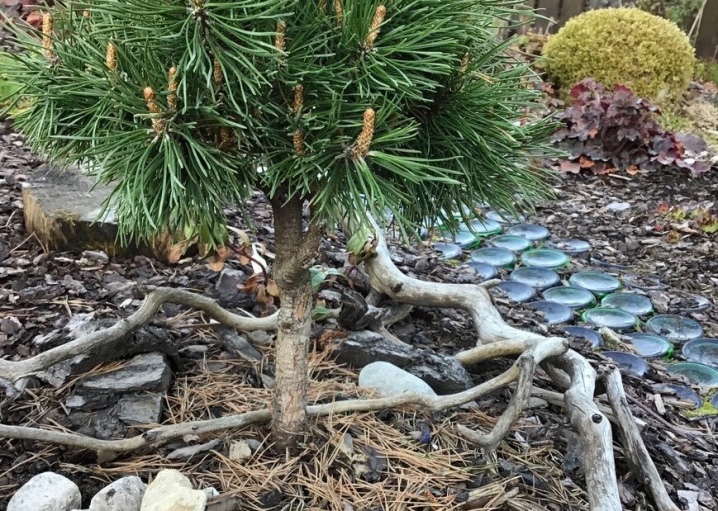
Pruning
Such a process is carried out very rarely. After all, mountain pine by its nature has a properly growing crown. Pruning is most often done for sanitary purposes. At the same time, branches that have dried out or frozen out a little are removed. In addition, in this way you can slightly slow down the growth of the plant, as well as shorten the annual shoots.

Reproduction
Many are engaged in breeding mountain pine. There are several ways to do this: cuttings, seeds, and also grafting. Each of them has its own characteristics.
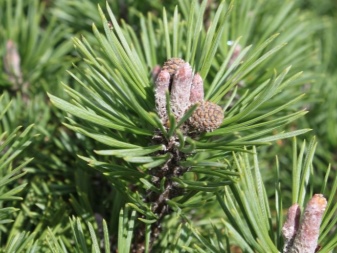

Using seeds
Selected seeds must be germinated in separate containers or sown directly into open ground. Before that, they will need stratification. Planting seeds is best in the spring.
But at the same time it is necessary to take into account the fact that not all the qualities of the plant with such a planting can be preserved.
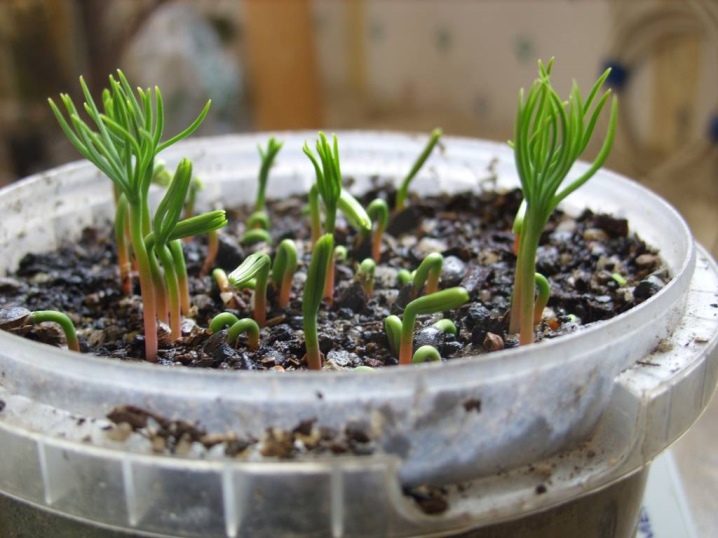
Using cuttings
Cuttings are best cut from annual seedlings. They are separated with the bark. To begin with, the finished material must be soaked for 10-11 hours in a specially purchased growth accelerator. After that, they need to be kept in clean water for three days. Then you can start planting in open ground. The cuttings that were planted in the autumn should take root throughout the year, but the cuttings planted in the spring will fully take root after 180 days.
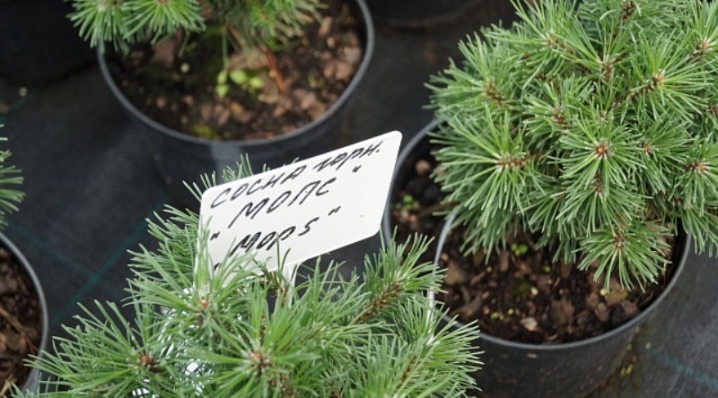
By vaccination
For the grafting to work, the stock must be well developed. Most often, seedlings are chosen for this, the age of which is up to 5 years. Such a process is possible both in the open field and on a trunk. Grafts must be prepared in late autumn and put either in the cellar or in the refrigerator, after moistening the gauze in which they must be wrapped. The vaccination itself can be done in spring and autumn. However, they are better accepted in the spring. In addition, in this way, all the qualities of pine are best conveyed.
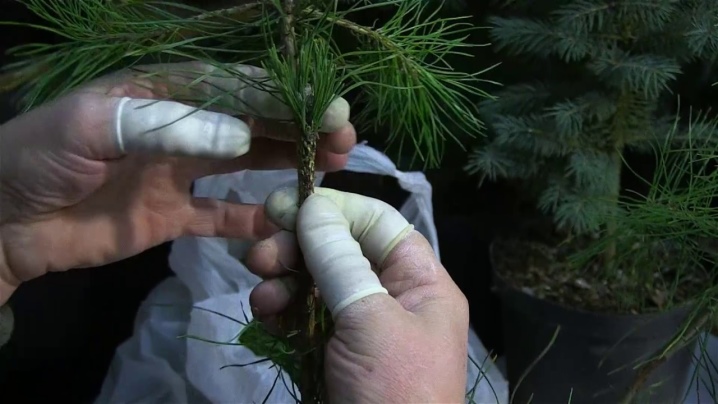
Pests and diseases
The mountain pine "Pug" is quite resistant to various diseases that are found in conifers, but is almost never attacked by pests. However, some diseases are still possible. For example, when it is too hot, young seedlings may suffer from the scorching sun rays. In addition, with improper care, pine can develop fungal diseases. It is worth making an overview of the most common among them.
- Scleroderriosis. In this case, the pine gradually dies off the buds. As a result, the entire branch dies completely.
- Schütte. Signs of this disease will be a change in the color of the needles themselves. Instead of bright green, its color will turn brown. In addition, a white bloom appears on the branches, which in its appearance very much resembles a cobweb.
- Seryanka. A symptom of the disease is the appearance of a red bloom on the coniferous leaves of the plant.
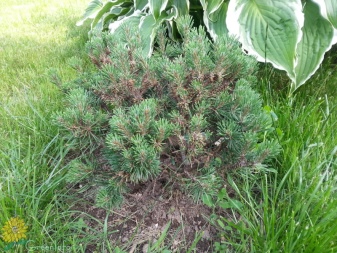
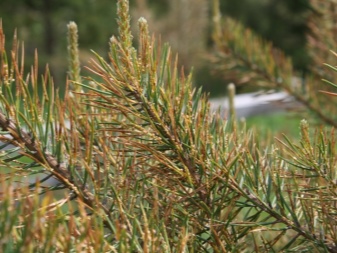
In order to prevent these diseases, copper sulfate is most often used, and all diseased branches are also broken off.
Garden decoration
This plant is simply irreplaceable in the garden landscape design. It can also be used to decorate stone gardens, and even to decorate rocky slopes. Besides, many plant dwarf pine around the perimeter of the yard to create hedges or multi-tiered compositions of various shapes... From pine on a trunk, you can make a real mini-garden on an open loggia or balcony.
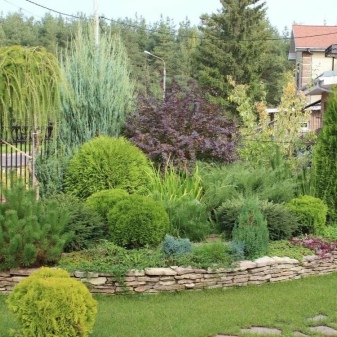
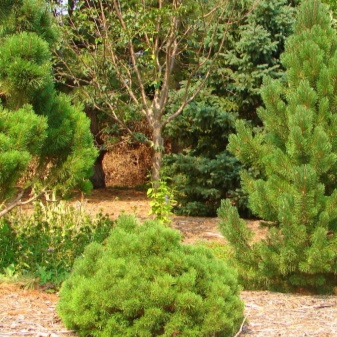
Summing up, we can say that mountain pine "Pug" is perfect for decorating the site, and for decorating a small winter garden... The only thing that will be required is to look after her more diligently for the first few years. The rest of the time the pine will grow on its own and will not require too much attention.
For information on how to plant a mountain pine tree and properly care for it, see the next video.



































































The comment was sent successfully.